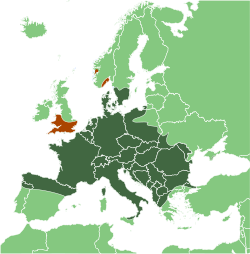Maximum-Likelihood-Tree of Lactarius blennius and relativs
Evolutionary relationships of Lactarius blennius
Figure. Molecular Phylogenetic anaylsis of by Maximum Likelihood method:
The evolutionary history was inferred by Lactarius blennius using the Maximum Likelihood method based on the Tamura-Nei model. The tree with the highest log likelihood (-1630.1222) is shown. The percentage of trees in which the associated taxa clustered together is shown next to the branches. A Minimum Evolution tree was used as an initial tree in the heuristic search. The tree is drawn to scale, with branch lengths measured in the number of substitutions per site. The analysis involved 12 rRNA-gene nucleotide sequences, all obtained from the genbank. All positions with less than 95% site coverage were eliminated. That is, fewer than 5% alignment gaps, missing data, and ambiguous bases were allowed at any position. There were a total of 635 positions in the final dataset. Evolutionary analyses were conducted in MEGA5.
Evolutionary analyses were conducted in MEGA5. The two Lactarius subdulcis sequences were used as outgroup. All sequences were aligned by the CustalW algorithm with standard settings.
List of the GenBank Sequences.
- AY606944 Lactarius blennius AY606944
- FJ348708 Lactarius cinereus FJ348708
- FJ348711 Lactarius cinereus FJ348711
- DQ421992 Lactarius flexuosus DQ421992
- AJ889961 Lactarius fluens - AJ889961
- HM189794 Lactarius necator HM189794
- JQ888186 Lactarius vietus JQ888186
- JF908266 Lactarius controversus JF908266
- AJ272246 Lactarius controversus AJ272246
- HM189802 Lactarius subdulcis HM189802
- HM189804 Lactarius subdulcis HM189804
- DQ421991 Lactarius trivialis DQ421991
- JF908275 Lactarius circellatus JF908275
Relevante Bilder
Relevante Artikel
Graugrüner MilchlingDer Graugrüne Milchling ist eine Pilzart aus der Familie der Täublingsverwandten. Der mittelgroße Blätterpilz hat einen braungrünen bis olivgrauen Hut, den meist konzentrisch angeordnete Flecken zieren. Druckstellen an den weiß bis cremefarbenen Lamellen verfärben olivgrau-fleckig. Seine scharf schmeckende, weiße Milch trocknet graugrünlich ein. Als einer der häufigsten Begleitpilze der Rotbuche ist der Milchling in den europäischen Buchenwäldern weit verbreitet. Die Fruchtkörper erscheinen im Sommer und Herbst. Aus dem Pilz wurden einige pharmakologisch interessante Inhaltsstoffe isoliert. Der scharf schmeckende Milchling ist kein Speisepilz. .. weiterlesen










